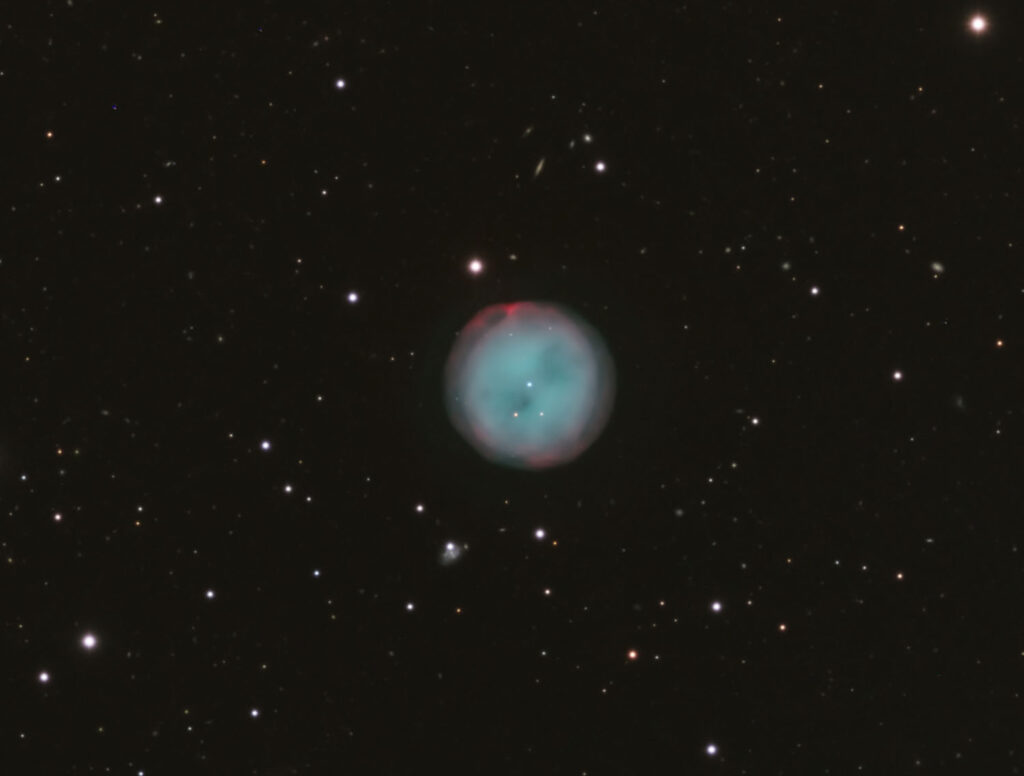Messier 97
The Owl Nebula, Planetary Nebula. Ursa Major
- Description
- Technical
- Links
The Owl Nebula (also known as Messier 97, M97 or NGC 3587) is a starburst (“planetary”) nebula approximately 2,030 light years away in the northern constellation Ursa Major. Its light reaching our neighbourhood is about 8,000 years old. It is approximately circular in cross-section with faint internal structure. It was formed from the outflow of material from the stellar wind of the central star as it evolved along the asymptotic giant branch. The nebula is arranged in three concentric shells/envelopes, with the outermost shell being about 20–30% larger than the inner shell. A mildly owl-like appearance of the nebula is the result of an inner shell that is not circularly symmetric, but instead forms a barrel-like structure aligned at an angle of 45° to the line of sight.
The nebula holds about 0.13 solar masses (M☉) of matter, including hydrogen, helium, nitrogen, oxygen, and sulfur; all with a density of less than 100 particles per cubic centimeter. Its outer radius is around 0.91 ly (0.28 pc) and it is expanding with velocities in the range of 27–39 km/s into the surrounding interstellar medium.
The 14th magnitude central star has passed an apex of its evolution so is condensing to form a white dwarf. It has 55% to 60% of solar mass, is 41 to 148 times solar luminosity (L☉), and has an effective temperature of 123,000 K. The star has been successfully resolved by the Spitzer Space Telescope as a point source that does not show the infrared excess characteristic of a circumstellar disk.
Telescope: Astro Physics 175EDF f8.3
Mount: Astro Physics 3600GTO “El Capitan”
Camera: SBIG STT8300
Guider: Mini Borg 50 / SBIG STi
L: 36×10 mins = 360 mins, R: 24×10 mins = 240 mins, G: 24×10 mins = 240 mins, B: 24×10 mins = 240 mins
Total Imaging Time: 18h 00m
Data Imaged remotely over 8 nights during January, February & March 2017.
Data acquisition & Processing by David Churchill.
None

